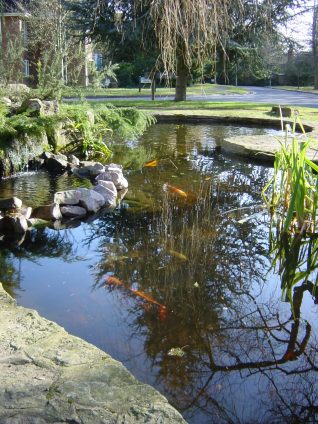Helping to keep the city green

Built in the early 1970s
Varndean Park was built in the early 1970’s on the site of three houses in Preston – Fircroft, Effingham Lodge and Laine House, the coach house of which is still standing. It is easy to mourn the fact that those grand houses have disappeared whilst ignoring the fact that those that now stand where they did, are themselves some forty years old and are now an established part of our ever-evolving city.
Nature’s inimitable flourishes
The estate could well have become another faceless area, but mercifully considerable effort has been made by residents (at their expense) to make this a green enclave, with particular emphasis being placed on the preservation of existing trees and the planting of new ones. Nature in turn has repaid this help by mellowing the brickwork and breaking up the stark geometrical shapes with her own inimitable flourishes, arabesques and colours from her incomparable palette.
Wonderful dawn chorus
In addition, pesticides are not used so that there has been a marked increase in birdlife. Once again nature has generously acknowledged this by providing an effective sound barrier from the traffic on the busy A 23 alongside, enabling the wonderful dawn chorus to be enjoyed. The birds, and other wildlife have a source of water from a pond with several fish, including carp.
The local fox
Urban foxes are now to be found in almost every town, but the local one is so laid back that he regularly unconcernedly lies, day and night, on a patch of grass, watching what’s going on with keen interest. He will also often join you on a stroll, trotting along beside you, for all the world as though he’s a dog out for a walk.
Intensive tree planting
Undoubtedly it has been the intensive tree planting which has been instrumental in triggering this whole process. Besides trees planted in the gardens of houses, which themselves have additional species not listed here, the species (a list of which you can download below) are now all represented along the estate roads and bordering green areas.
Dr Johnson’s opinion
Dr Johnson would no doubt have been pleased at our leafy city today. In 1882 , a New York Times article observed that on a visit a century earlier “it seems he did not think very favourably of Brighton . He is even said to have detested Brighthelmstone Downs “as a country so truly desolate that if one has a mind to hang one’s self in desperation at being obliged to live there, it would be difficult to find a tree on which to fasten a rope.”
Click the link below to download the list of species mentioned above




No Comments
Add a comment about this page